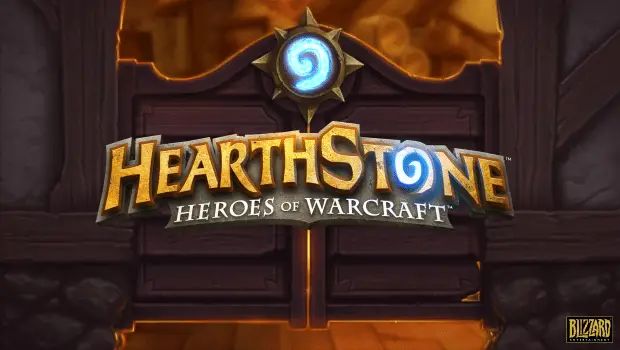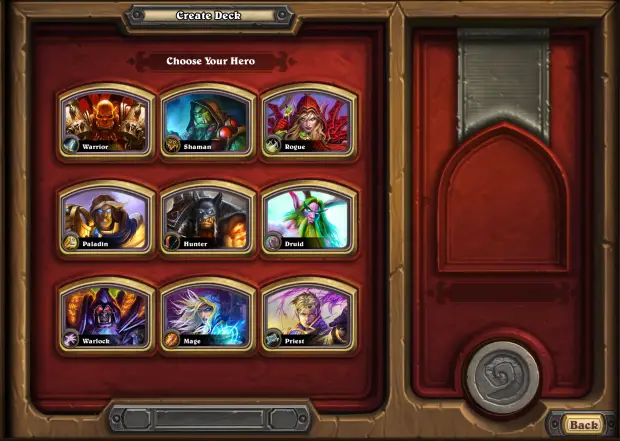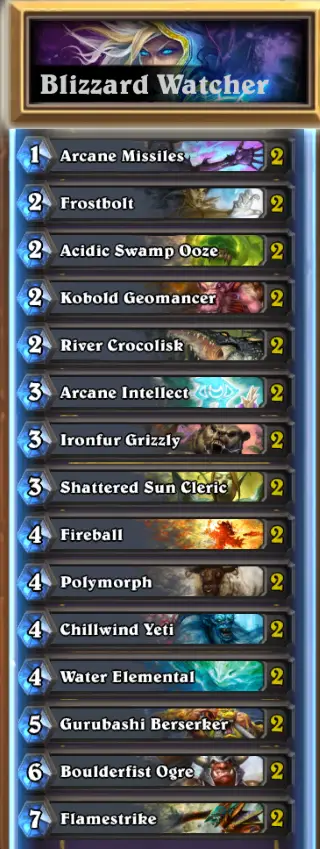Building your first Hearthstone deck

Hello! Today on Blizzard Watch, we’re going to take a look at how to build decks in Hearthstone. Deckbuilding is one of the core skills needed in order to progress up the ranks to Legend, and unfortunately, it’s not covered in the in-game tutorial. In this guide, I’ll show you how you can create your own effective Hearthstone deck, and explain some common Hearthstone terminology in the process. Ready? Let’s begin.
Choose your theme
The very first step you’ll want to take is to pick what theme your deck will have. Essentially, what strategy is your deck going to use to win the game? There are five basic themes (often called types or win conditions) that your deck can choose from.
- Aggro decks (sometimes called face or rush decks) are all about killing the enemy hero as quickly as possible. They care little for their opponents cards on the board; unless there’s a Taunt card in play, they ignore it and attack the hero directly. These decks are attractive due to their speed and simplicity. If you haven’t killed the enemy hero by Turn 8, you’ve probably lost.
- Tempo decks look to gain control of the board as early as possible, and use that early board position to gain an unbeatable advantage before the opponent can counter. Tempo decks are similar to aggro due to both having inexpensive cards and fast playstyles, but trade speed and damage for consistency .
- Midrange decks attempt to be a jack of all trades. Their goal is to slow aggro/tempo decks with spells and then flip the game with stronger minions, while still keeping enough speed to gain an early advantage against control decks. Their lack of a niche has made them uncommon in high-level play, but recent card alterations have made a few midrange variants competitive again.
- Combo decks or burst decks revolve around a specific combination of cards that can do large damage to the enemy hero in a short span of time. These combos can be small and added as extra ammo to another deck type (typically midrange), or large, where other cards in the deck are simply used to stall until the combo can be deployed. Very large combo decks (frequently called OTK decks, for one-turn-kill) were very common in early Hearthstone play, but are much less common now.
- Finally, control decks are the brutes of Hearthstone. These decks go for the biggest, most powerful cards, and win by stalling the game until they come out to play. Loaded with board control, control decks are vulnerable to being bursted down in the early-game, but are unstoppable late. If you’re watching a matchup between two control decks, bring a Snickers, because it’s gonna be a while.
There are some additional subtypes such as ramp decks and mill decks, but this will do for an introduction. One important note: Cards with a low mana cost are typically cheaper to craft than cards with a high mana cost, so aggro, tempo, and midrange decks are much more common for new players than combo or control variants. For this guide, we’re going to construct a midrange deck, using nothing but Basic cards.
Choose your class

Once you’ve picked what theme your deck will be, you want to pick what class to use. Some classes are much more effective at certain themes than others; for example, warriors are poor in the early-game but amazing late, while hunters are the converse. For this guide, we’re going to choose the game’s most well-rounded class, mage.
After you choose a class, it’s time to start picking cards. There’s two schools of thought on this. Some players advocate picking every card you want to include, then selectively cutting back until you get to 30. Others advocate simply picking the best cards available to make a 15-20 card deck that fits your theme best, then adding “fillers.” In the interests of space, we’ll use the second approach. We’ll start with class cards, as there generally have the most power, then fill the deck with neutrals.
- Water Elemental As a 3/6 for 4 mana, this card is amazing for midrange as it can kill many 2-mana or 3-mana minions without dying. The freeze effect is a nice bonus that can sometimes stop the opponent from making a gamewinning play.
- Polymorph This type of card is known as “removal,” as it effectively removes an enemy minion from the game. The ideal time to play Polymorph is against a large creature that has the capacity to kill 2 or more of your minions, with a Fireblast (the mage hero power, which is available once per turn) to kill the resulting sheep immediately afterwards. Polymorph is also excellent against enemy minions with powerful Deathrattles, such as Sylvanas — the effect is not considered a death, so the deathrattle does not trigger.
- Fireball and Frostbolt These direct damage spells are included in almost every deck because of their versatility. If you need to use it as removal, you can. If not, a Fireball/Frostbolt combo hits for 9 damage from Turn 6 onwards, and can swing a game. I’ve won (and lost) many games where a Fireball showed up right when it was needed most.
- Flamestrike More than any other card, this is the mage card that all other classes hate. This type of card is known as a board clear, and boy, does it ever. Players are getting better now about playing cautiously on Turn 6, so it’s not the huge blow-out card it used to be, but it’s still a game-swinging card.
- Arcane Intellect Running out of cards to play quickly loses the game. Arcane Intellect provides this deck with some card draw to keep your motor running a bit longer. Remember, though, that the card does nothing by itself, so you really don’t want to see it until later in the game.
Consider your mana curve
We’ll take a quick break here to talk about mana curve. A term adopted from Magic: The Gathering, mana curve is simply the number of cards in your hand at each cost. (When graphed, it makes a pretty curve, hence the name.) Aggro and tempo decks want lots of 1 and 2-cost cards, so their mana curve will start high and drop sharply. It’s rare to see an aggro deck with a card that costs more than 6 mana. A midrange deck focuses on 2-cost through 4-cost cards, then a smattering of higher-cost cards and maybe a couple 1’s. Control decks are the opposite of midrange; a chunk of 1 and 2-cost cards to keep the game from snowballing out of control, a few 3’s and 4’s, than several 5-cost and up.
Looking at our mana curve, we’ve definitely got an oversupply of 4-mana cards already. We possibly add a few more, but I wouldn’t want to go over 8. We have an undersupply of 2’s and 3’s, so we need to add there. Time to take a look at some neutral cards.

- Acidic Swamp Ooze A solid 3/2 2-mana minion that can also pop the occasional weapon for us.
- River Crocolisk Nothing special, but we need more 2-mana minions to fill out the curve. Alternatively, you could choose Bloodfen Raptor here, or spend a bit of gold to try to get a Knife Juggler, which is a direct upgrade.
- Shattered Sun Cleric By itself, the Cleric is not very good, but it frequently will allow your cheaper minions to “trade up” (kill a higher-cost minion). Excellent for keeping board control.
- Ironfur Grizzly A solid 3-mana minion that can save us, with Taunt.
- Chillwind Yeti This pushes me to my limit on 4-mana cards, but it’s worth it to include Yeti. It’s boring, but it’s one of the most solid cards in the game. It can kill most 2 or 3 mana minions and survive, and can trade with some 5 or 6-mana minions.
- Gurubashi Berserker We don’t have any 5-drops, so let’s include the Berserker. He shines in mage decks, since you can Fireblast him yourself to turn him into a much more threatening 5/6.
- Boulderfist Ogre While there are many stronger 6-mana cards, there’s none better in the Basic Set. Ogre works really well with our deck because we can potentially pair him with a Frostbolt on Turn 8 or a Fireball/Polymorph on Turn 10.
- Arcane Missiles We need a low-cost card to round out the deck, so we’ll dip back into the class cards to pick up Arcane Missiles. The random nature will let you down sometimes, but it’s hard to beat 3 damage for 1 mana.
- Kobold Geomancer Mana curve would suggest a 3-mana card to finish out, but none of the ones left excite me, so we’re going to go with the Geomancer. Poor stats, but we have 8 spell damage cards, so the spellpower should be an asset.
That wraps up the deck! Give it a few plays, let me know your thoughts, and I’ll be back next time to discuss some basic play concepts!
Please consider supporting our Patreon!
Join the Discussion
Blizzard Watch is a safe space for all readers. By leaving comments on this site you agree to follow our commenting and community guidelines.




